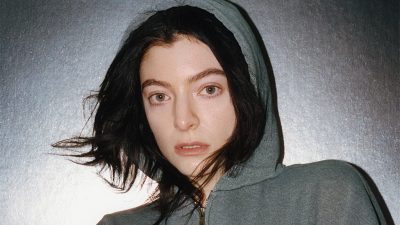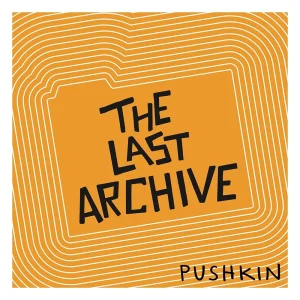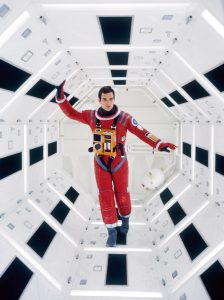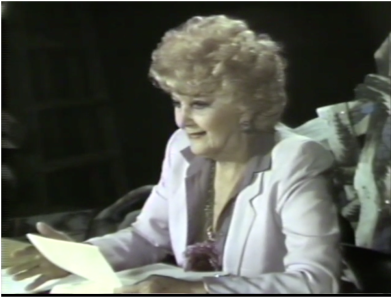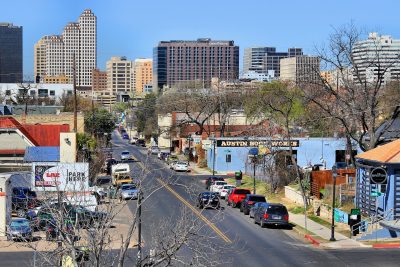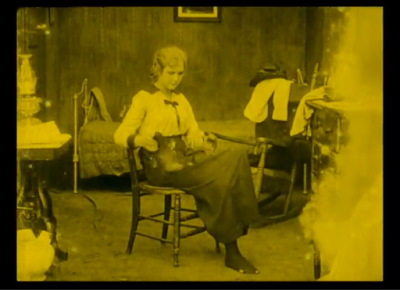Example Projects
See what the AV-Annotate community is creating
The Evolution of Lorde
This project by Leiah Bodden traces the artistic development of the New Zealand singer-songwriter Lorde through a curated selection of audiovisual materials that include music videos, performances, and interviews. The annotations highlight the evolution of her style, themes, and public persona across her career, moving from the minimalist detachment of Pure Heroine to the emotional and aesthetic richness of Melodrama and the introspective calm of Solar Power. Each annotation set categorizes observations of structure, context, impact, and literary devices, offering a layered analysis of her creative output. Taken together, the project demonstrates how Lorde’s music and visual presentation create a narrative of growth, transformation, and identity over time.
Annotating “The Last Archive”
Originally authored by Ali Gunnells and edited by Sam Turner, this project is the culmination of an independent study conducted under the supervision of Dr. Tanya Clement during the summer of 2022. The project explores how archival rhetorics are employed in contemporary podcasting through an analysis of Jill Lepore’s podcast The Last Archive. In the pages of this AVAnnotate project, you will find annotations of the first four episodes of The Last Archive Season 1, which were completed using Audacity.
Auterism
This project by Jack DeVry Riordan explores the theory and topic of Auteurism and some of the filmmakers who best represent it, including filmmakers Stanley Kubrick, Wes Anderson, Tomás Gutiérrez Alea, Andrei Tarkovsky, Akira Kurosawa, and more.
Latin American Press Review Radio Collection
As part of the Latin American Programs of the Longhorn Radio Network, the Latin American Press Review radio program covered all of Latin America and the Caribbean, airing from 1973 to 1974. Divided into two segments, each program began with a news segment that highlighted a variety of reports from across Latin America, while the second half consisted of interviews or discussions with a variety of groups and/or individuals. A diverse number of topics were covered, including human rights abuses, economic conditions, music, popular culture, and the history and politics of the region.
Originally processed in 2010, digital reformatting of analog reel-to-reel audiotapes is ongoing. The annotations cover the programs released between 1973 to 1974. The highlighted annotations are the countries and communities that stood out throughout the segments included within these programs.
Annotating Adler: Identity and Embodiment in the Stella Adler Collection
This project by Zoe Bursztajn-Illingworth contextualizes recently digitized video from the Stella Adler and Harold Clurman Collection at the Harry Ransom Center. The eleven digitized videos, provided to the public by The Ransom Center, show Adler teaching at the Stella Adler Studio of Acting between 1969 and 1980 as well as being interviewed by Bob Crane. These digitized videos are a small portion of over a thousand audiovisual items in the collection. We hope that these annotations and essays put in context these digitized audiovisual materials and serve as an entry point into research in the Stella Adler collection.
RHE 306 Anthology
This is an anthology of AVAnnotate projects developed for RHE 306: Rhetoric and Writing. For this project, students were asked to think about how arguments about gentrification function differently in digital spaces—through sound, image, and voice. Using AVAnnotate, they produced original audio or video compositions paired with annotations and a transcript that examine the rhetorical strategies at play.
Lois Weber’s Shoes
This comparison project by Luke Sumpter annotates Lois Weber’s 1916 silent film Shoes. In one of the annotation sets, the first contributor traces the film’s narrative through its use of intertitles to establish a timeline, pathos, dialogue, and its overall exegesis. The second set of annotations traces the film’s editing techniques, which in 1916, were perfecting their ability to capture time and space. Taken together, the project demonstrates the way in which film form creates story in the hands of a pioneering woman filmmaker.
Voices: Micro-editions of Readings by Marlatt, McClure, and Rukeyser
Edited by Tanya Clement, Emily Murphy, Karis Shearer, Trent Wintermeier, and Matthew Kilbane, the micro-editions gathered here include Michael McClure reading from his book Ghost Tantras; Muriel Rukeyser reading a poem-sequence that shares a title with her poetry collection The Speed of Darkness; and Daphne Marlatt reading from her first collection of poems leaf leaf/s (Black Sparrow Press, 1969) in 1969 and then later in 2019. It is a collection that shows an investment in the audition of context.
Radio Venceremos
In Vera Burrows’s AVAnnotate project “The Power and Reality of Radio During Revolution / El poder y la realidad de la radio durante revolución,” Burrows presents her research on a collection of civil war recordings from a Salvadoran rebel radio station, Radio Venceremos, to both anglophone and hispanophone audiences. She does so by creating two sets of annotations on the same audio events: one annotation set translates the transcripts of these Spanish recordings into English (useful for anglophone audiences) and the other presents contextualizing research on the violence of these recordings into Spanish (useful for hispanophone audiences). This project was originally built for AudiAnnotate, and was re-created with AVAnnotate by Jack D. Riordan.
Comparison Screen for Shoes
This comparison project by Luke Sumpter and Zoe Bursztajn-Illingworth showcases two different aspects of formal film analysis, editing and intertitle, within the 1916 silent film Shoes by Lois Weber.
Camille (1921): A Case for Annotating Film History
This digital edition by Janet Reinschmidt annotates the 1921 film Camille starring Rudolph Valentino and Alla Nazimova.
Zora Neale Hurston’s WPA Field Recordings (1939)
This digital edition by Tanya Clement transcribes and contextualizes recordings of the Harlem Renaissance writer and anthropologist Zora Neale Hurston doing fieldwork in Jacksonville, FL. Held by the Florida Memory Project, the Zora Neale Hurston’s WPA field recordings in Jacksonville, FL were made for the Library of Congress on June 18, 1939 with Herbert Halpert recording.
Digital Florilegium
This project is an interdisciplinary study by Luke Sumpter, an undergraduate student at UT Austin, of time in digital media. Sumpter annotates and discusses films by Denis Villeneuve, Derek Jarman, a radio play adaptation of The Glass Menagerie, and a recorded conversation between Carson McCullers and Tennessee Williams held at the Harry Ransom Center.
SpokenWeb Digital Anthology
Edited by Dr. Zoe Bursztajn-Illingworth and Dr. Tanya Clement at UT Austin, The SpokenWeb Digital Anthology exhibits annotated audio and video recordings from literary archives across Canada. The anthology presents original research written to contextualize and newly theorize these recorded readings, panels, videopoems, and classroom visits by authors such as Kathy Acker, Irving Layton, Dorothy Livesay, Kaie Kellough, Roy Kiyooka, Daphne Marlatt, Michael McClure, and Muriel Rukeyser.
Furious Flower Poetry Center Transcriptions
These transcripts of video recordings from the Furious Flower Collection at James Madison University in Harrisburg Virginia were created by Evan Sizemore. The recordings from Furious Flower document interviews and readings by major African American poets, among them Rita Dove, Yusef Komunyakaa, Sonia Sanchez, and Major Jackson, accompanied by contextualizing information about them.
Anne Sexton, Sweetbriar College, 1966
This an annotated recording featuring Anne Sexton reading at Sweetbriar in 1966. The recording is held as part of the Anne Sexton Papers at the Harry Ransom Center at the University of Texas, Austin. The annotations were created by Dr. Tanya Clement.
